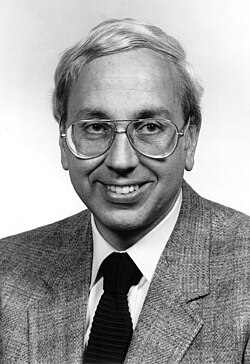Biography
John D. Anderson Jr. was born on October 1, 1937, in Lancaster, Pennsylvania. He enrolled at the University of Florida in Gainesville in approximately 1953. In 1959, he earned a bachelor's degree in Aeronautical Engineering with high honors. In 1959, he was hired by the United States Air Force to become a Task Scientist at the Aerospace Research Laboratory, Wright-Patterson Air Force Base in Dayton, Ohio. He stayed in that position until 1962, when he enrolled at Ohio State University in Columbus under fellowships from the National Science Foundation and NASA. In 1966, Anderson earned his Ph.D. in Aeronautical and Astronautical Engineering from Ohio State. That same year, he joined the United States Naval Ordnance Laboratory in White Oak, Maryland, becoming the Chief of the Hypersonic Group. [2]
In 1973, Anderson joined the faculty of the University of Maryland, becoming Chairman of the Department of Aerospace Engineering. He became Professor of Aerospace Engineering in 1980, serving in that capacity until 1999, when he retired and was named professor emeritus. He also served as an affiliate member of the History Department at UMD. The John Anderson Scholarship Fund was established in Anderson's honor in 2000 by the A. James Clark School of Engineering jointly with the Department of Aerospace Engineering. [3]
Anderson was elected as a member into the National Academy of Engineering for aerospace engineering and history textbooks and for contributions to hypersonic gas dynamics.
He is currently the Curator of Aerodynamics at the Smithsonian Institution's National Air and Space Museum.
This page is based on this
Wikipedia article Text is available under the
CC BY-SA 4.0 license; additional terms may apply.
Images, videos and audio are available under their respective licenses.
